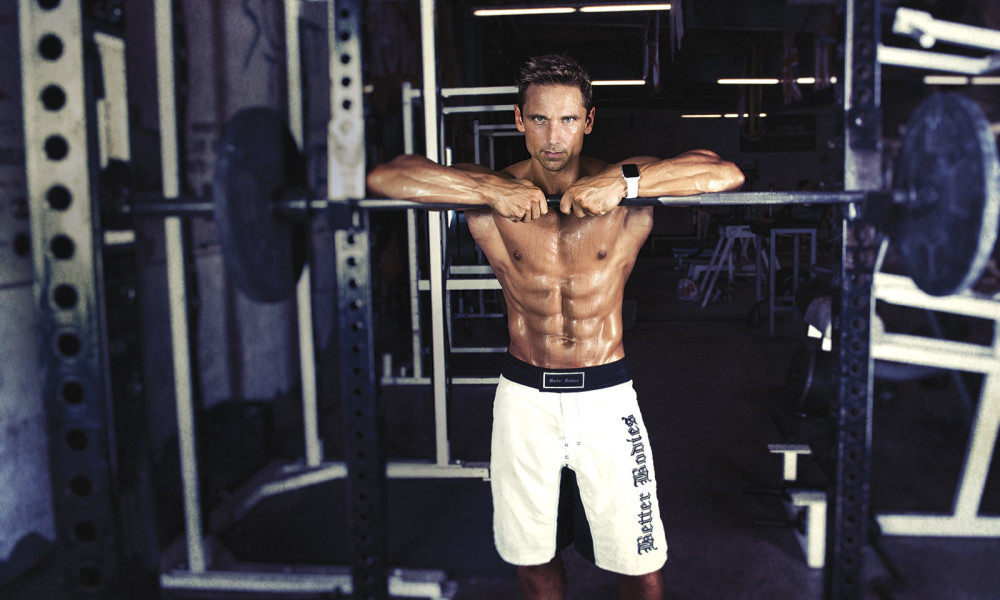

By Mike Carlson
Workout by Alexander Juan Antonio Cortes
Photography by Binais Begovic
Most guys have two settings when it comes to training: lift weights to build muscle, and do cardio to get lean and develop a little endurance. But a certain sweet spot exists when you merge these two worlds. Using a barbell in a very concise and particular way can build the type of conditioning that leads to the lean, sinewy, muscular body that probably inspired you to pick up weights in the first place. In this case, the word “conditioning” isn’t referring to the ability to run a 10K or complete a triathlon. It means having the gas tank and durability to complete the volume-heavy sessions that are so effective at inducing muscle growth.
Look at the workouts of Mr. Olympia Men’s Physique Champion Jeremy Buendia or the training splits of any elite competitor. They spend 90 minutes to two hours in the weight room and often perform upwards of 50 sets. Most likely, this is after a high-intensity interval training session earlier that day, and quite possibly seven to 10 days from their last day off from the gym. Guys like Buendia have conditioned themselves to handle workloads like this. And that’s where the barbell complex comes in.
DAVID MORIN
Age: 41
Lives: North Miami Beach, Florida
Profession: Trainer, fitness model, sponsored athlete with Dymatize Nutrition, founder and VP of
Lynx Fitness
Likes: Skateboarding, guitar, hiking, mountain biking, the beach life, helping people discover a purpose-driven life full of challenges and personal victories
Dislikes: Negative outlooks, self-defeating mentalities, unwarranted aggression, and illogical behavior
Favorite Supplements: Amino Pro and ISO-100 by Dymatize Nutrition
Last Book Read: The Book Of Five Rings by Miyamoto Musashi
Favorite Movie: Chariots of Fire, Gladiator, Rocky III
Sponsors: Dymatize Nutrition, Fitmark Bags, MyOatmeal.com
Twitter:
@getmorin
Instagram:
@getmorin
Websites:
getmorin.com
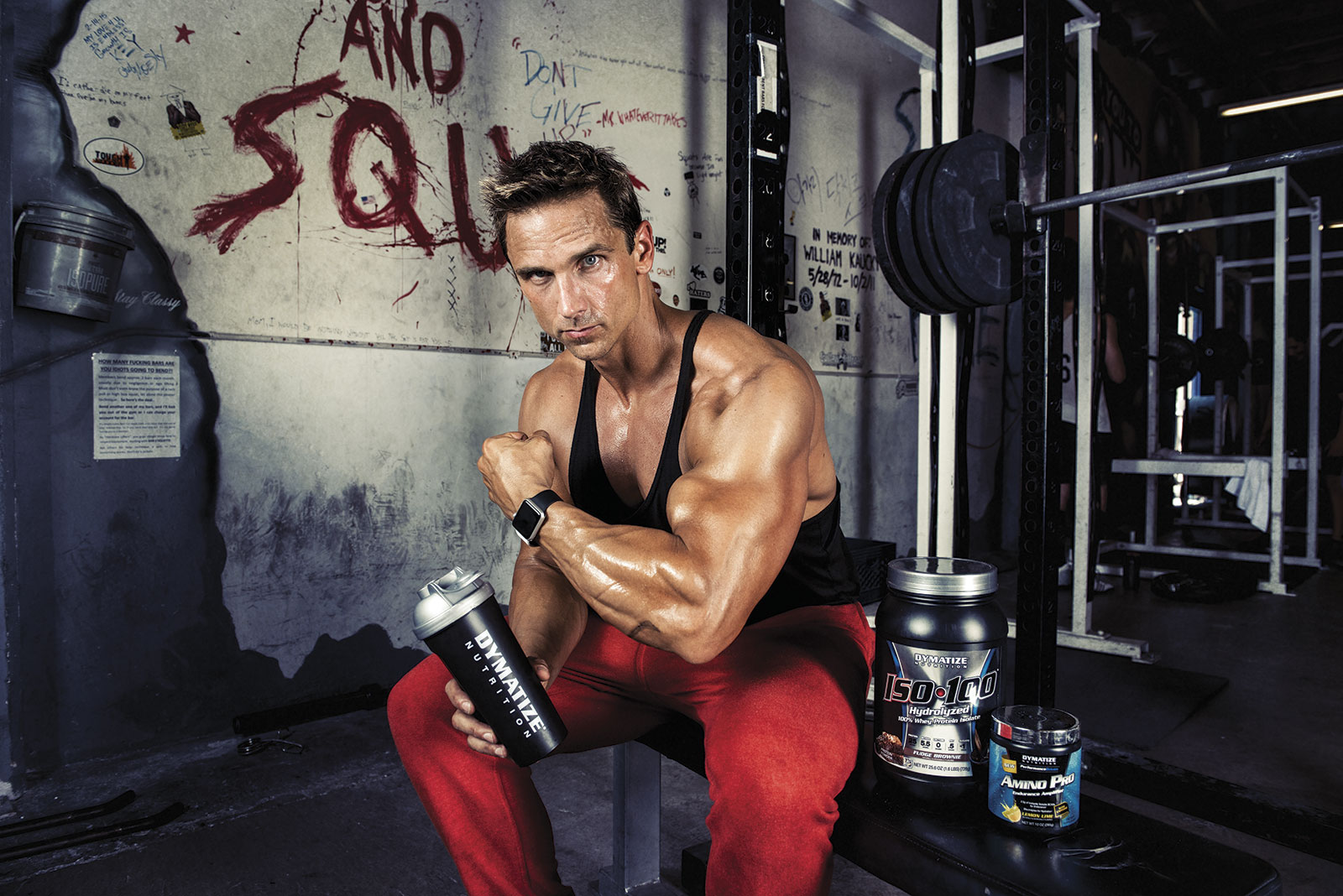
Perfected and popularized by Cold War-era Romanian weightlifting coach Istvan Javorek, the barbell complex is a cluster of exercises done in a set order. Javorek used complexes with his athletes to increase their work capacity in order to meet the demands of Olympic-level weightlifting training. He needed to give his athletes the endurance to cruise through the crucible of Soviet-style weightlifting sessions, which were often double workouts of two to three hours a day.
“When the term ‘work capacity’ gets used, it is basically referring to lifters’ physiological endurance in the context of lifting weights. Endurance at its most basic is how well the body uses oxygen for energy. The more efficient someone is, the better energy they have, the harder they can train,” says Alexander Juan Antonio Cortes, the director of trainer education at Relentless Performance in Vero Beach, Florida, and a physique coach under John Meadows at Mountain Dog Diet. “By increasing work capacity in the gym, we are improving our ability to train with intensity. For hypertrophy, which requires prolonged time under tension, eccentric damage, and the reps to create a pump, being able to train long and train hard without fatiguing is of the utmost benefit.”
Barbell complexes are one of the most efficient, effective training tools ever devised. They are totally customizable—you can add and subtract any exercise you want, depending on your goals—and if you want a dose of calorie-burning cardio, few techniques can deplete your energy reserves as quickly and easily at the end of a workout.
Be sure to stash your ego in the locker room before starting a barbell complex workout. It can be an exceptionally humbling experience to find yourself lying on the floor gasping after a set of exercises performed with 10-pound plates on the bar. It can also be a rough haul for the self-conscious among us to be seen squatting or doing rows with 95 pounds. Get used to the idea. While these exercises are performed in a circuit fashion, it is not the walk in the park that you experience doing a circuit of machine exercises.
“The barbell is almost always going to be the most draining training implement you can use,” Cortes says. “In this regard, the metabolic cost is high, so these complexes do not need to be done many times for there to be benefit.”
The customizability of barbell complexes is the factor that makes them one of the most versatile and useful tools to add to your fitness toolbox. Depending on how you stack your exercises together—and how you set up your rep schemes, intensity, volume, and rest periods—complexes can improve strength, power, conditioning, or hypertrophy in a minimal amount of time. The key is using the right exercises—moves that segue smoothly from one to the next for ease of execution—in an effective sequence.
“Barbell complexes can be used as a form of interval training,” Cortes says. “Generally I would advise someone to do these only a few times a month, on a day in which energy is high and they wish to challenge themselves with something that will test their endurance and mental fortitude.” IM
INTERVIEW
Iron Man: What kind of diet do you follow?
David MORIN: I use a modified Paleo diet about 70 percent of the time. When I’m involved in a movie or photo shoot, I use a ketogenic diet to become leaner and more fat efficient. My holistic sensibilities compel me to go for very nutrient-dense whole foods.
IM: What supplements do you take to guarantee a great workout?
DM: I’m huge on taking Dymatize ISO-100 protein post-workout, and I sip on Amino Pro by Dymatize all day long. I take about 4,000 to 5,000 milligrams a day of vitamin C, because without an antioxidant to buffer the blood from lactic acid, you’ll lose your pump fast! I love taking coconut oil, resveratrol, ginkgo biloba, and hawthorn before I train, and when you add some intra-workout—Creatine Micronized and Amino Pro—the pump is insane!
IM: What is a supplement you can’t live without?
DM: The best overall supplement that I use on a daily basis is Amino Pro by Dymatize. You get all the BCAAs your body needs to repair and sustain muscle, plus added electrolytes and citrulline malate, which is converted directly into nitric oxide.
Complex 1: Total Body Blaster
During this complex you’ll perform the most movements and spend the longest time under tension, but it’s also the easiest in terms of rep execution. Here, you’ll be performing five reps of each exercise for as many rounds as you want with short periods of rest between each effort. This is a very intense circuit, so shoot for two rounds as your starting point.
You won’t need to work with much weight for these, and 65 pounds will present a significant challenge for even the most well-conditioned athlete. More advanced lifters can either start with, or work up to, 95 pounds.
1. Bent-Over Row
2. Upright Row
3. Push-Press
4. Back Squat
5. Reverse Lunge
6. Good Morning
Rounds: 2 to 5
Reps: 5 each exercise, all rounds
Weight: 65 pounds
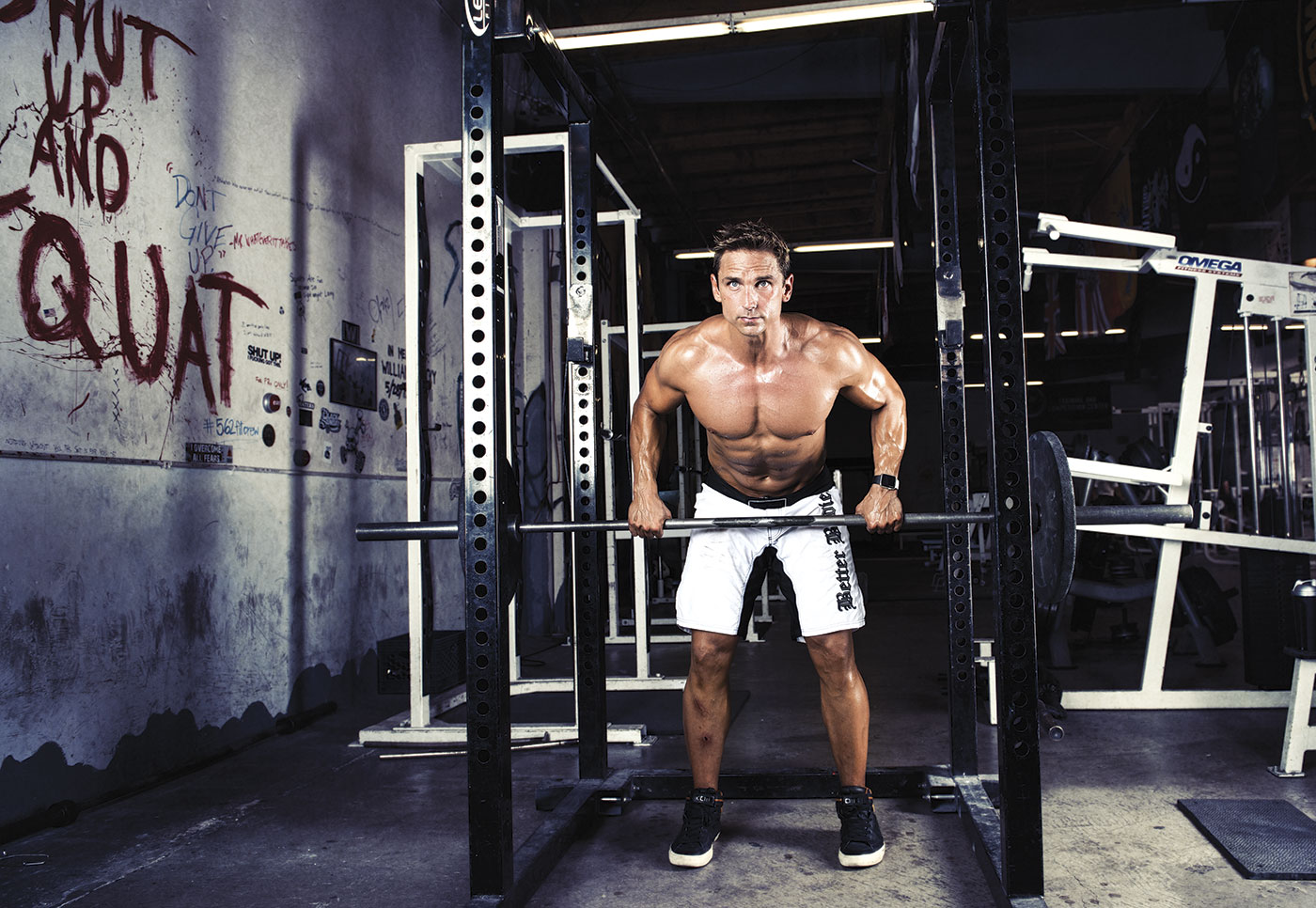
Bent-Over Row
With a loaded barbell on the floor, hinge at the hips and bend forward so the bar is directly under your navel with your torso close to parallel to the floor. Grasp the bar outside shoulder width, and then pull it to your stomach. Hold for a second, then return to the start position with the bar hanging a few inches off the floor.
Upright Row
Shift into a close overhand grip and come to standing so the barbell is resting on the front of your thighs. Initiate the move by pulling up and outward with your elbows. Your hands will trace an upward path, with the bar being pulled to shoulder level. Your upper arm should not travel past parallel with the ground, and your hands should remain below arm level throughout the exercise.
Push-Press
Hold the barbell in a conventional military press position, with your hands slightly just outside your shoulders and your feet shoulder-width apart. Start by bending your knees slightly, and then drive the weight upward, pressing the bar overhead to a locked-out position slightly behind your head. Your feet should remain stationary throughout. On the last rep, bring the bar behind your head and into a back squat position.
Back Squat
With the bar across your upper back, your feet about shoulder-width apart, and your knees slightly bent, turn out your toes just a bit. Keeping your head neutral, abs tight, and torso erect, bend at the knees and hips to slowly lower your body as if you were going to sit down in a chair. Pause when your legs reach at least a 90-degree angle, then drive through your heels, extending at your hips and knees until you’re standing again.
Reverse Lunge
Maintain the back squat position, with your feet shoulder-width apart and the barbell on your back. Take a large step directly behind you and descend into a lunge, keeping your head and chest up. When your knee brushes the ground, push yourself back up to the start position.
Good Morning
With the bar still on your back, slowly hinge at the hips and bring your torso as close to parallel to the floor as possible. Be sure to maintain the arch in your lower back throughout the movement and do not slump your shoulders forward. Activate your hamstring and push your hips forward to return to the start.
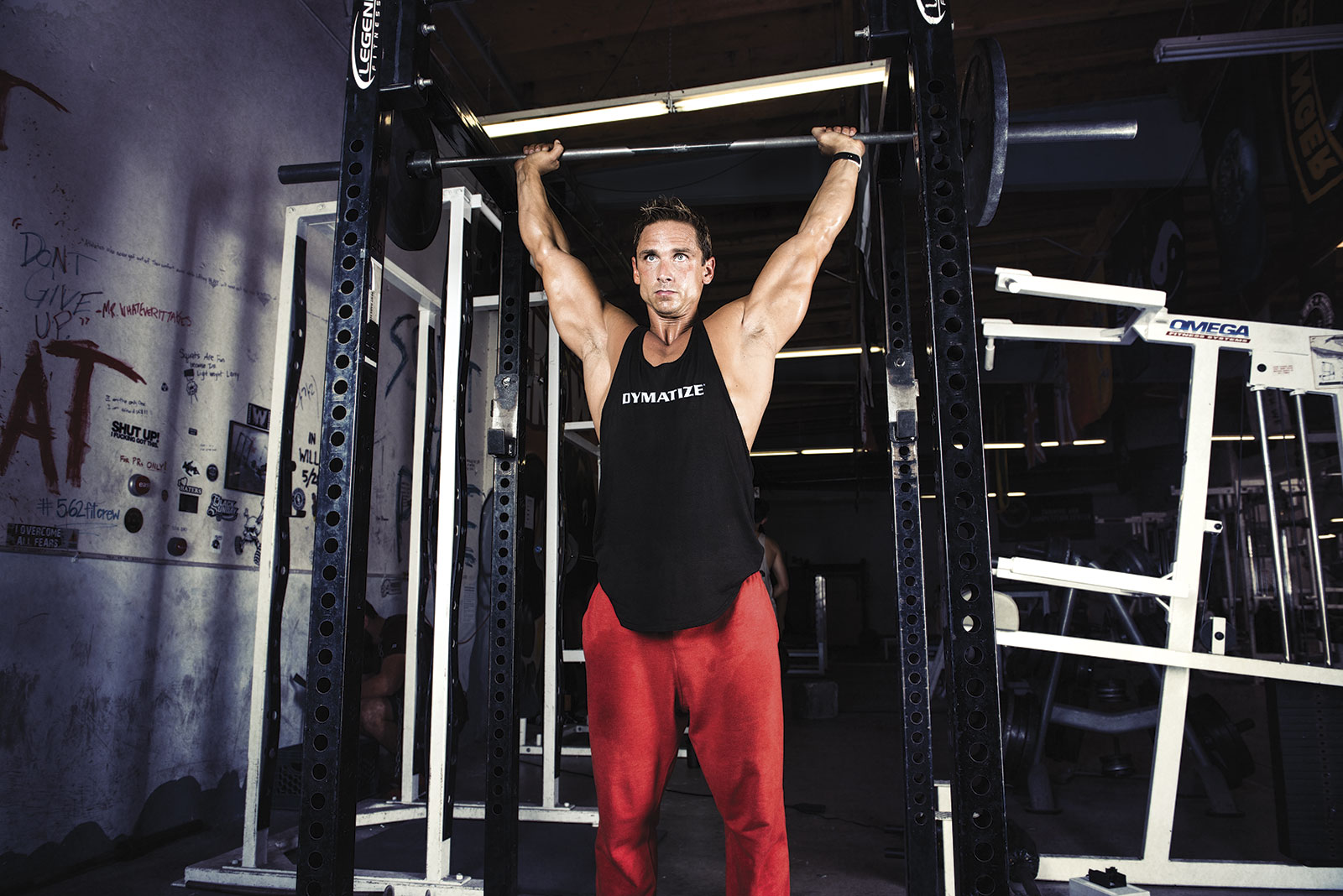
Complex 2: Upper-Body Blaster
Here you’ll be using moderate amounts of weight for maximal repetitions, with the goal of rapidly adding muscle mass across your whole body. This complex is designed in a classic “reverse pyramid” fashion, starting with high reps and working down as fatigue increases.
For hypertrophy, you’re essentially looking for a pump, so keep the rest periods to 60 to 90 seconds. If that’s too challenging, start with 90 to 120 seconds of rest, and trim that down as you develop endurance and stamina.
In this exercise sequence, you’ll be focusing on the upper body—shoulders, biceps, triceps, back, and core. The idea here is to use a light weight for the first round of the complex, increasing your load for each subsequent round.
1. Reverse Curl
2. Overhead Press
3. Standing Barbell Triceps Extension
4. Jump Squat
Weight: 45 to 65 pounds
Rounds: 3
Reps: 16 (each exercise) round one,
12 round two, 8 round three
Reverse Curl
Stand straight holding the bar with an overhand grip, hands shoulder-width apart. Your arms should hang straight down so the bar rests in front of your thighs. Keeping your back straight and elbows tucked into your sides, curl the bar up until the top of your forearms come close to your biceps. Pause, then lower the bar back to the front of your legs and repeat.
Overhead Press
After the last curl, shift your grip and hold the bar at shoulder height. Keep your head neutral, abs tight, elbows pointed down, and lower back arched. Spread your legs slightly wider than shoulder width. Powerfully press the bar overhead to full extension. Squeeze your shoulders for a count, then slowly lower the bar back to your upper chest and repeat for reps.
Standing Barbell Triceps Extension
Once you’ve completed the final overhead press, hold the barbell above your head with your arms fully extended. Keeping your triceps close to your head and elbows in, lower the bar behind your head. Only the forearms should move, while the upper arms remain stationary.
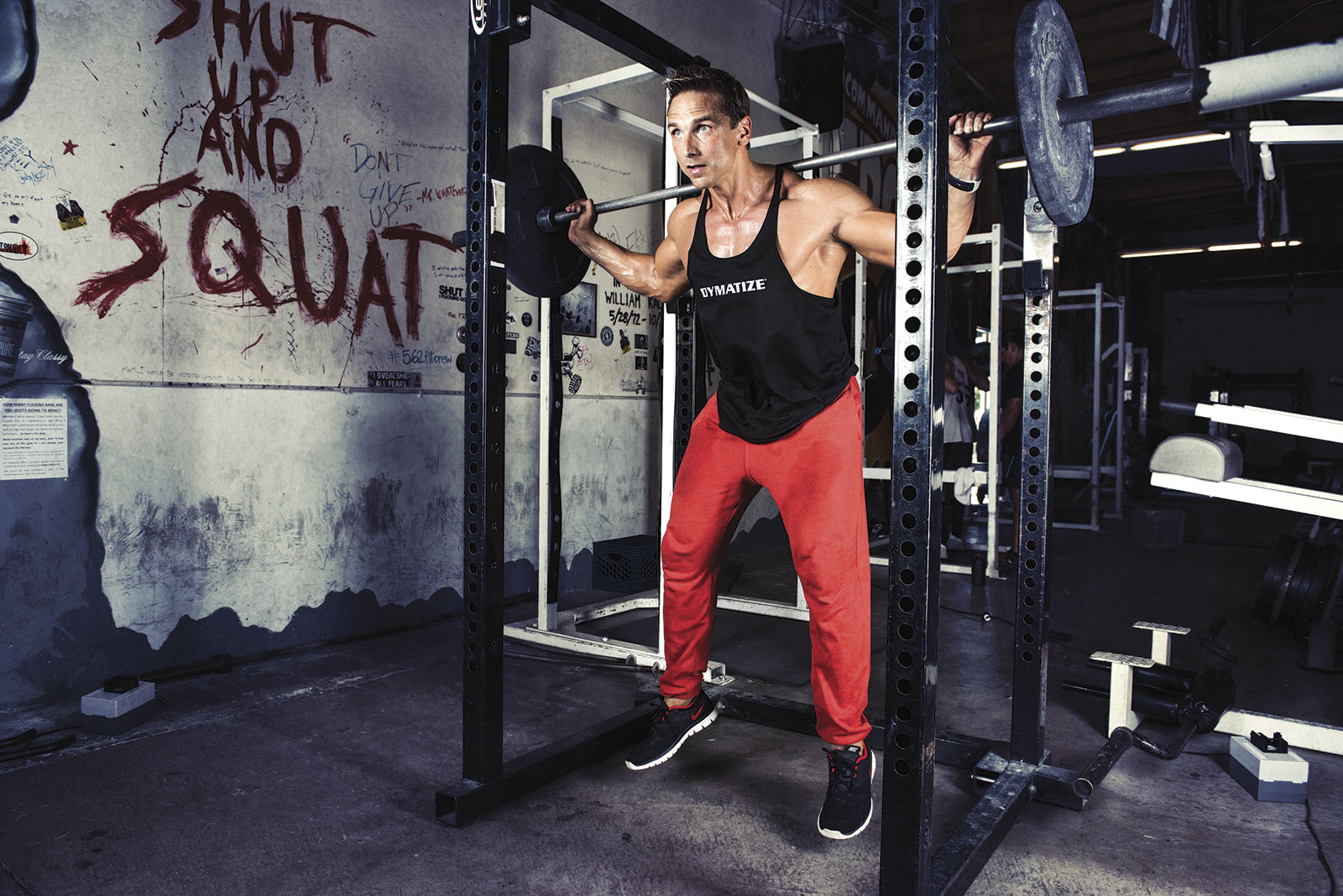
Jump Squat
With your feet shoulder-width apart and your hands tightly around the bar in a comfortable position—and your elbows directly under the bar—push your hips back and descend into a full, below-parallel squat. From here, explode back to the top position jumping your feet completely off the ground. Land softly and repeat.






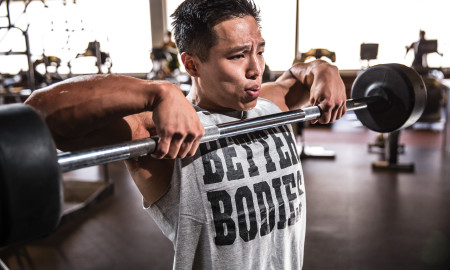
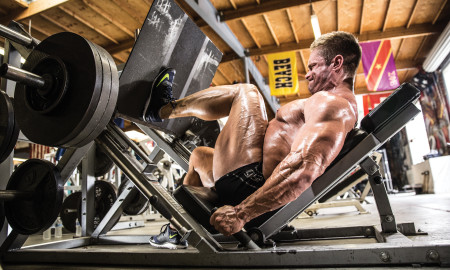






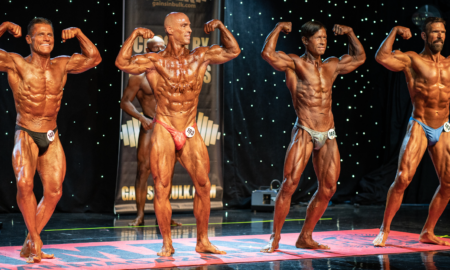
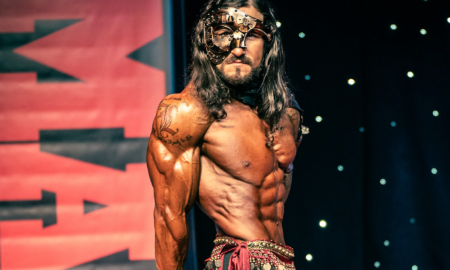

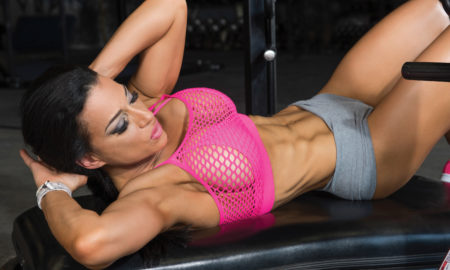
You must be logged in to post a comment Login